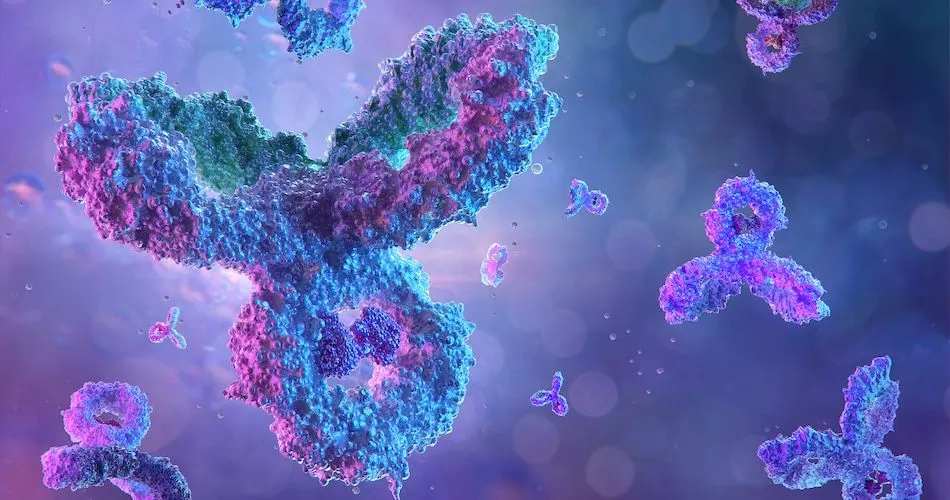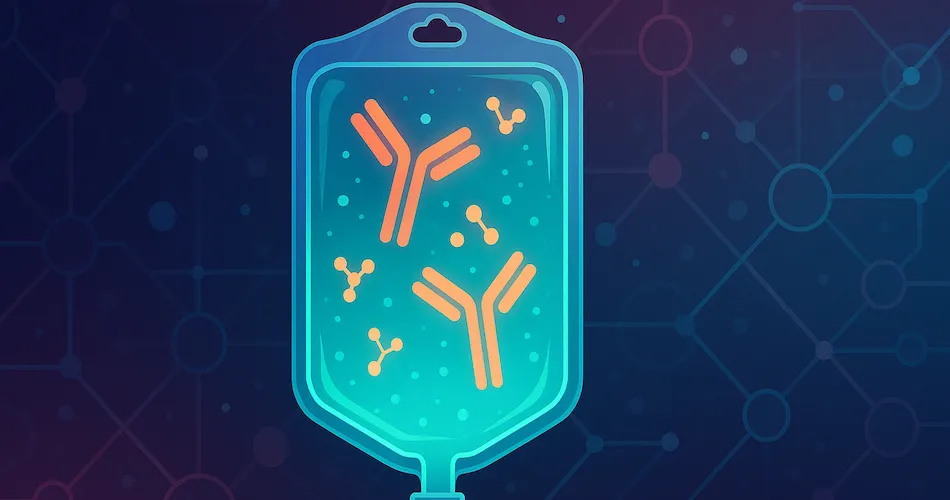ASH 2023: Understanding Outcomes of CAR T in Extramedullary Multiple Myeloma

At ASH 2023 we had the privilege of interviewing Dr. Darren Pan, when he presented the study Outcomes after CAR T Cells in Multiple Myeloma Patients with Extramedullary and Paramedullary Disease.
Extramedullary disease (EMD) is a poor prognostic factor for multiple myeloma patients even in the era of innovative therapies, while patients with paramedullary disease (PMD) have better prognosis.
In this study, Dr. Darren Pan and his colleagues sought to characterize EMD and PMD in the peri-CAR T period, assess their effects on outcomes after CAR T, and evaluate the ability of CAR T-cell therapy to clear extramedullary disease.
What Did The Study Evaluate?
- A total of 134 patients received CAR T-cell therapy for relapsed/refractory multiple myeloma between April 2017 and February 2023, they were followed for a median of 18.6 months
- Among the patients, 59 were treated with ciltacabtagene autoleucel, 52 with idecabtagene vicleucel, and 23 with other products on clinical trials
- 25.4% of patients had Extramedullary Disease (EMD) at baseline
- Among patients with measurable EMD, the median Size of the Plasmacytoma Deposit (SPD) was 11.15 cm2. Among patients with measurable EMD, the median size of the Plasmacytoma Deposit (SPD) was 11.15 cm2
- Patients were heavily pretreated, with triple-class refractory status present in: 94.1% of EMD+ patients, 96.0% of PMD-only patients, and 74.7% of patients with neither EMD nor PMD.
Conclusions
- The presence of extramedullary disease, not paramedullary disease, is linked to worse progression-free survival (PFS) and overall survival (OS) post-CAR T-cell therapy, but controlling extramedullary disease before CAR T-cell therapy with optimal bridging chemotherapy and/or radiation therapy may improve outcomes
- Patients with plasmacytoma size <50 cm2 (smaller) had high response rates and deep responses, with two-thirds clearing extramedullary disease, meaning that CAR T-cell therapy shows potential for benefiting high-risk patients
- Patients with bigger extramedullary tumors (≥50 cm2) didn't benefit as much from CAR T-cell therapy
- 42.9% of patients relapsing with the extramedullary disease after CAR T-cell therapy remained MRD negative in bone marrow, indicating bone marrow MRD doesn't fully represent disease control, post-CAR T.
- Half of patients relapsing post-CAR T-cell therapy had EMD, and most with baseline EMD relapsed with EMD despite initial radiographic negativity.
Unlock Personal Insights Into Your Diagnosis for Free with HealthTree Cure Hub
By securely connecting your electronic health records, HealthTree Cure Hub allows you to discover treatment options, find a specialist, keep track of your disease, and so much more! Sign up for a free patient account today to get started.
At ASH 2023 we had the privilege of interviewing Dr. Darren Pan, when he presented the study Outcomes after CAR T Cells in Multiple Myeloma Patients with Extramedullary and Paramedullary Disease.
Extramedullary disease (EMD) is a poor prognostic factor for multiple myeloma patients even in the era of innovative therapies, while patients with paramedullary disease (PMD) have better prognosis.
In this study, Dr. Darren Pan and his colleagues sought to characterize EMD and PMD in the peri-CAR T period, assess their effects on outcomes after CAR T, and evaluate the ability of CAR T-cell therapy to clear extramedullary disease.
What Did The Study Evaluate?
- A total of 134 patients received CAR T-cell therapy for relapsed/refractory multiple myeloma between April 2017 and February 2023, they were followed for a median of 18.6 months
- Among the patients, 59 were treated with ciltacabtagene autoleucel, 52 with idecabtagene vicleucel, and 23 with other products on clinical trials
- 25.4% of patients had Extramedullary Disease (EMD) at baseline
- Among patients with measurable EMD, the median Size of the Plasmacytoma Deposit (SPD) was 11.15 cm2. Among patients with measurable EMD, the median size of the Plasmacytoma Deposit (SPD) was 11.15 cm2
- Patients were heavily pretreated, with triple-class refractory status present in: 94.1% of EMD+ patients, 96.0% of PMD-only patients, and 74.7% of patients with neither EMD nor PMD.
Conclusions
- The presence of extramedullary disease, not paramedullary disease, is linked to worse progression-free survival (PFS) and overall survival (OS) post-CAR T-cell therapy, but controlling extramedullary disease before CAR T-cell therapy with optimal bridging chemotherapy and/or radiation therapy may improve outcomes
- Patients with plasmacytoma size <50 cm2 (smaller) had high response rates and deep responses, with two-thirds clearing extramedullary disease, meaning that CAR T-cell therapy shows potential for benefiting high-risk patients
- Patients with bigger extramedullary tumors (≥50 cm2) didn't benefit as much from CAR T-cell therapy
- 42.9% of patients relapsing with the extramedullary disease after CAR T-cell therapy remained MRD negative in bone marrow, indicating bone marrow MRD doesn't fully represent disease control, post-CAR T.
- Half of patients relapsing post-CAR T-cell therapy had EMD, and most with baseline EMD relapsed with EMD despite initial radiographic negativity.
Unlock Personal Insights Into Your Diagnosis for Free with HealthTree Cure Hub
By securely connecting your electronic health records, HealthTree Cure Hub allows you to discover treatment options, find a specialist, keep track of your disease, and so much more! Sign up for a free patient account today to get started.

about the author
Jimena Vicencio
Jimena is an International Medical Graduate and a member of the HealthTree Writing team. She has a passion for languages and is currently learning Japanese. In her free time, she loves playing with her cats. Jimena is also pursuing a bachelor's degree in journalism.
More on Clinical Trials
Trending Articles




Get the Latest Multiple Myeloma Updates, Delivered to You.
By subscribing to the HealthTree newsletter, you'll receive the latest research, treatment updates, and expert insights to help you navigate your health.
Together we care.
Together we cure.
3x Faster.












